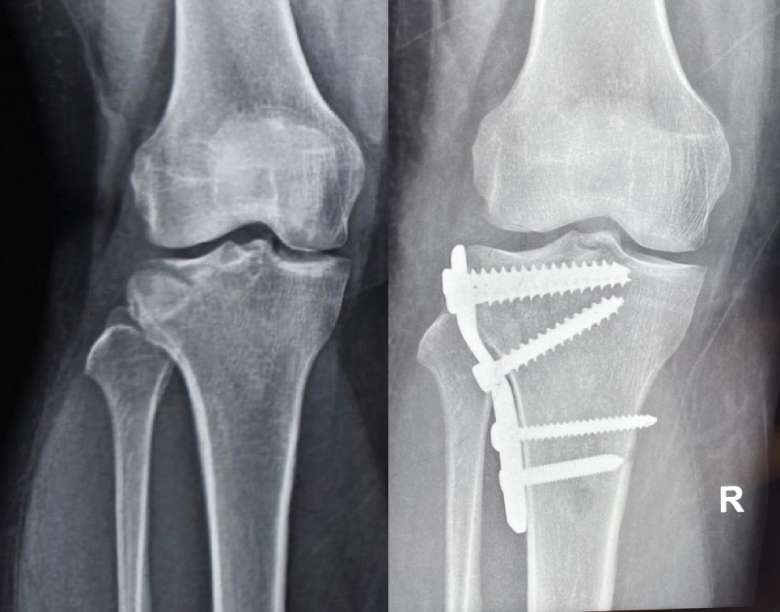What is Fracture Fixation with Plates and Screws?
This is a surgical procedure to realign and stabilize broken bones using metal plates and screws. The plates are attached to the outer surface of the bone with screws to hold the fracture fragments in proper alignment during healing. The surgery requires exposure and direct visualisation of the fractured part of the bone so as to allow optimum positioning of the plate and screws.
What patient can expect before surgery?
- Clinical examination to recognize the injury and presence of any additional injuries that require treatment
- Primary stabilization of the patient is a multi-disciplinary process that aims to ensure that the injured patient is adequately treated for all additional injuries especially head/chest/abdomen/spine and pelvis injuries. Some patients may require admission/transfer to the intensive care unit (ICU) for optimization
- X-ray of the affected limb to evaluate the fracture configuration and extent
- CT scan of the limb may be required to better understand the fracture configuration in some patients
- Preoperative physiotherapy assessment focuses on ameliorating secondary complications like bedsores, pulmonary embolisms (blood clots) etc.
- Anaesthesia checkup to recognise potential medical issues that can affect the peri-operative course
- Additional investigations like blood tests, chest Xray, electrocardiogram (ECG) or any other test as determined by the anaesthetist/physician / other medical specialists as being essential for surgery
- Patients who suffer high-energy injuries often require a multidisciplinary approach that also involves the physician, general surgeon, plastic surgeon, anaesthetist and other allied medical fields.
- If required some patients may require to be started on blood thinners (anticoagulants) because patients with lower limb fractures are at a higher risk of developing blood clots within the circulation which may then migrate to the heart or the lungs and cause perioperative complications.

Types of Fractures Treated
The ORIF method of fixation is mandated when the reconstruction of the fracture has to be accurate such as for fractures that extend into the joints. Any malreduction of such fractures can hasten joint arthritis. Plates and screws are commonly used for fractures of the:
- Arm bones (humerus, radius, ulna)
- Leg bones (femur, tibia, fibula)
- Wrist, ankle, pelvis
The Procedure
The anaesthetist in consultation with the patient usually decides the type of anaesthesia given for the surgery.
- The fractured bone is first exposed by the relevant surgical approach.
- Appropriate manoeuvres are made to reduce and realign the broken ends which are then provisionally fixed.
- A metal plate (stainless steel or titanium) of the required length is placed over the fracture site on the bone surface.
- Screws are inserted through holes in the plate into the bone above and below the fracture line.
- This securely holds the bone pieces together in anatomical alignment.
- The incision is closed with stitches or staples.
- The entire procedure is performed with the guidance of a special X-ray machine that allows the surgery to be done without directly visualising the fracture thus allowing for a minimally invasive procedure.
Benefits
- Provides rigid fixation to maintain proper bone alignment
- Allows for early mobilization of the joints which prevents stiffness
- Facilitates bone healing in the correct position
- Minimizes risks of malunion (improper healing)
Recovery Process
- A cast, splint, or brace may be used initially
- Physical therapy focuses on regaining mobility and strength. Range of motion exercises are started early to prevent the development of joint stiffness
- Weight-bearing is allowed based on the fracture location/stability. Some fractures may require an initial period of limited weight-bearing
- Most patients can resume normal activities within 3-6 months
Risks & Complications:
Potential risks include bleeding, infection, nerve injury, implant loosening or breakage, and non-union (failure to heal). Complications are relatively uncommon.
With proper surgical technique and adherence to the rehabilitation program, fracture fixation with plates and screws can successfully restore bones to their normal alignment and function.


